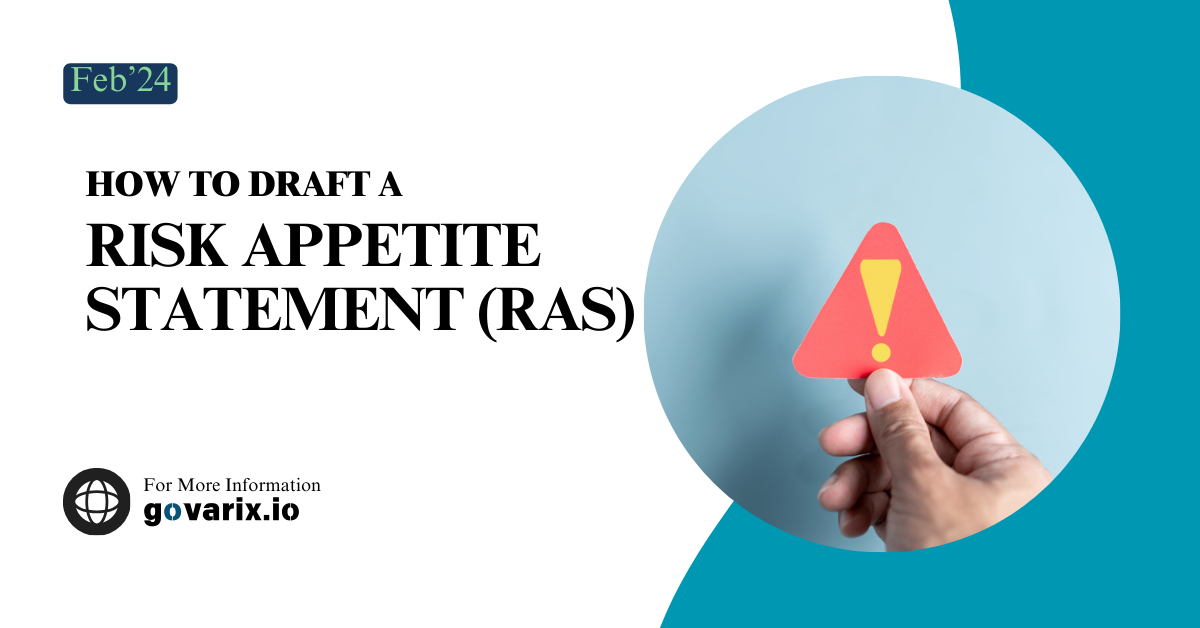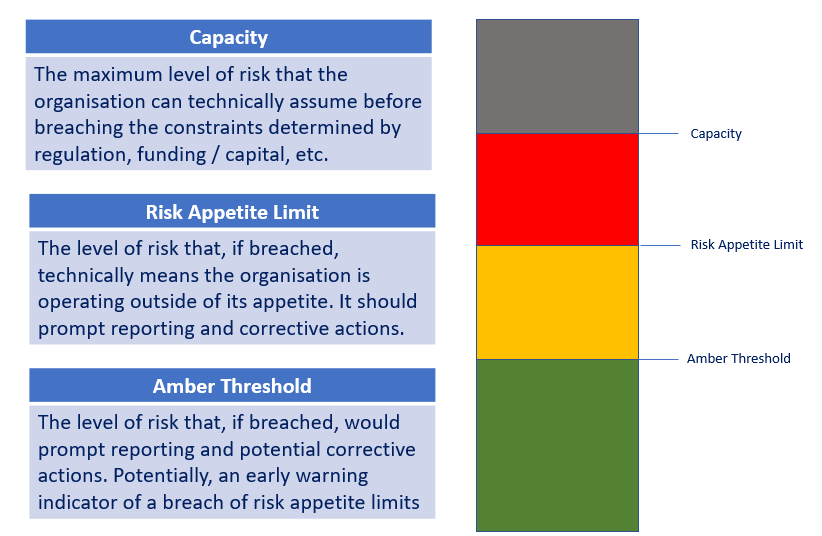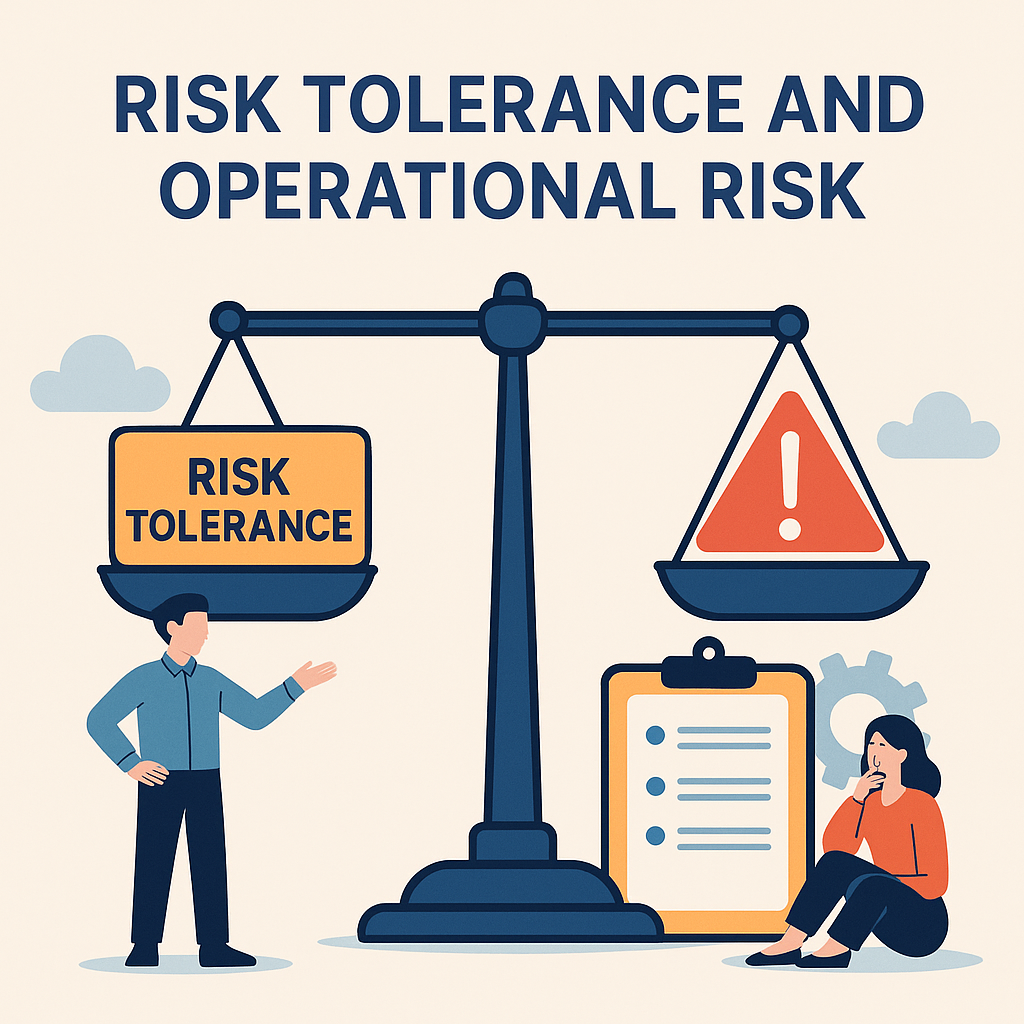Introduction
In an increasingly volatile business landscape, organizations must strike a balance between growth opportunities and risk exposure. A Risk Appetite Statement (RAS) serves as a strategic blueprint that defines the level of risk an organization is willing to accept while pursuing its objectives.
Whether you run a bank, tech startup, healthcare company, or e-commerce business, a well-drafted Risk Appetite Statement ensures financial stability, regulatory compliance, and informed decision-making.
This comprehensive guide walks you through seven key steps to drafting a robust Risk Appetite Statement with real-world examples for various industries. 🚀
Step 1: Define Business Objectives & Strategic Goals
Your Risk Appetite Statement should align with your business vision, mission, and objectives. If your organization prioritizes aggressive growth, your risk appetite will differ from a company focusing on stability and compliance.
📌 Example:
- A FinTech startup aiming for rapid expansion into multiple markets may have a high-risk appetite for market volatility but a low-risk appetite for regulatory compliance risks.
- A healthcare company will likely have a low-risk appetite for medical errors but a moderate risk appetite for operational risks.
✅ Actionable Steps:
- Identify core business objectives (e.g., market expansion, innovation, revenue growth).
- Assess how risk-taking supports or hinders these goals.
- Engage stakeholders (executives, board members, risk managers) to align risk appetite with strategy.
Step 2: Categorize and Prioritize Key Risks
Businesses face multiple types of risks, including financial, operational, compliance, reputational, and strategic risks. Categorizing and prioritizing risks helps organizations allocate resources effectively.
📌 Example:
E-Commerce Company
- High Risk Appetite: Digital marketing experiments & customer acquisition strategies.
- Low Risk Appetite: Cybersecurity breaches and supply chain disruptions.
Banking Sector
- High Risk Appetite: Market and investment risk (calculated exposure).
- Low Risk Appetite: Credit risk and regulatory non-compliance.
✅ Actionable Steps:
- Identify key risk categories relevant to your industry.
- Prioritize risks based on impact and likelihood.
- Determine risk interdependencies to assess cascading effects.
Step 3: Define Risk Tolerance and Risk Limits
Risk appetite is abstract without defining quantifiable risk limits. Setting clear risk tolerance thresholds prevents excessive risk-taking and ensures that risk is measurable.
📌 Example:
✅ Manufacturing Company
- Operational Risk Limit: Downtime should not exceed 1% of total production time per month.
- Supply Chain Risk Tolerance: Not more than 30% dependence on a single supplier.
✅ FinTech Firm
- Cybersecurity Risk Tolerance: System breaches should not exceed 0.1% of total transactions.
- Liquidity Risk Limit: Minimum cash reserves of $5 million at all times.
✅ Actionable Steps:
- Set quantifiable risk thresholds for key risks.
- Establish upper and lower limits for acceptable risk-taking.
- Regularly review risk limits based on market conditions.
Step 4: Establish Roles & Responsibilities in Risk Management
A strong governance structure ensures risk appetite is implemented, monitored, and adjusted effectively.
📌 Example:
✅ A large bank has:
- Board of Directors – Approves and oversees the Risk Appetite Framework.
- Chief Risk Officer (CRO) – Ensures adherence to risk policies.
- Business Unit Heads – Implement risk controls within departments.
✅ Actionable Steps:
- Define roles & responsibilities for risk governance.
- Ensure senior management and the board are accountable for enforcing risk appetite.
- Assign risk monitoring duties to dedicated personnel.
Step 5: Integrate Risk Appetite into Decision-Making
A Risk Appetite Statement should be a living document, guiding everyday business decisions.
📌 Example:
✅ A retail chain expanding into a new market uses risk appetite to:
- Assess real estate investment risks.
- Determine acceptable market penetration costs.
- Weigh the risk of supplier dependency.
✅ Actionable Steps:
- Integrate risk appetite into investment, hiring, product development, and financial strategies.
- Establish risk tolerance guidelines for decision-making.
- Train employees to align operational activities with risk appetite.
Step 6: Monitor, Review, and Update Regularly
Risk appetite should evolve based on market conditions, regulatory changes, and business growth.
📌 Example:
✅ A SaaS startup adjusts its risk appetite quarterly to:
- Increase tolerance for new technology adoption.
- Reduce risk limits for customer churn rates.
✅ Actionable Steps:
- Conduct quarterly risk reviews.
- Perform stress testing & scenario analysis.
- Update the Risk Appetite Statement as market conditions change.
Step 7: Communicate and Report Risk Appetite Effectively
Transparency in risk communication ensures stakeholders, employees, and investors understand risk boundaries.
📌 Example:
✅ An investment firm includes risk reports in shareholder updates:
- Highlights risk performance metrics.
- Explains adjustments in risk appetite due to economic conditions.
✅ Actionable Steps:
- Develop clear reporting mechanisms for risk appetite.
- Use dashboards, reports, and presentations to communicate risk.
- Ensure regulatory compliance with disclosure requirements.
📊 [Summary] Key Steps to Drafting a Risk Appetite Statement
| Step | Description | Example |
|---|---|---|
| 1. Define Business Objectives | Align risk appetite with strategic goals | A FinTech startup with aggressive expansion |
| 2. Categorize Risks | Identify key risk areas (financial, operational, compliance) | E-commerce supply chain vs. cybersecurity risks |
| 3. Set Risk Tolerance & Limits | Establish measurable thresholds for acceptable risk | Liquidity buffer in banking |
| 4. Assign Roles & Responsibilities | Define governance structures for risk management | Board & CRO responsibilities |
| 5. Integrate into Decision-Making | Embed risk appetite in strategic & operational planning | Retail expansion assessment |
| 6. Monitor & Update Regularly | Adapt to market changes, regulatory shifts, and stress testing | Quarterly risk reviews for startups |
| 7. Communicate & Report Risks | Ensure stakeholders understand risk tolerance | Shareholder reports in investment firms |
Final Thoughts
A well-crafted Risk Appetite Statement is a powerful tool for strategic risk management. Whether you’re in finance, tech, healthcare, or retail, defining clear risk boundaries enables better decision-making, financial stability, and regulatory compliance.
Is your company prepared to draft a risk appetite framework? If you need expert guidance, contact us today for a tailored risk management strategy! 🚀
References & Further Reading
- Risk Appetite Statements: Best Practices & Latest Research (Gaby Frangieh, 2024)
- Principles for An Effective Risk Appetite Framework (FSB, 2013)
- ISO 31000 Risk Management Guidelines – www.iso.org
- Basel III Framework – www.bis.org
- Financial Stability Board (FSB) Reports – www.fsb.org
- Understanding Risk Appetite Statements









